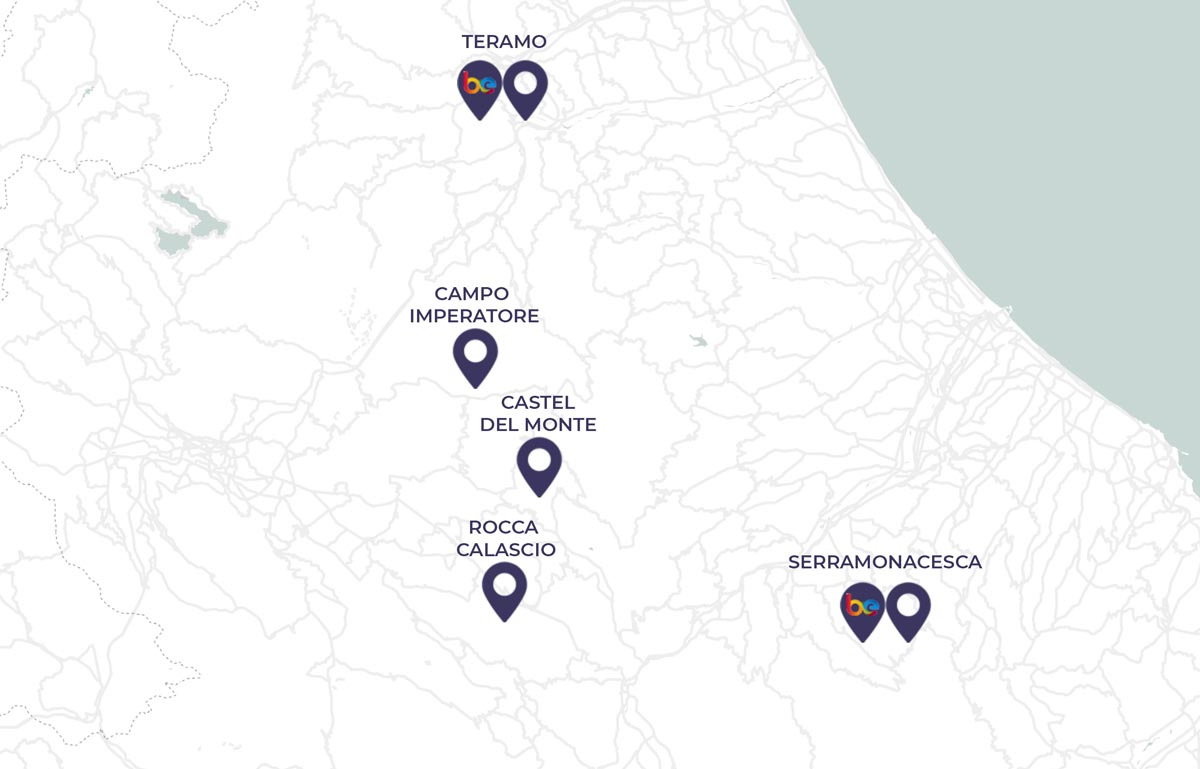Strictly aboard our electric car, we present an itinerary in one of the most evocative areas in all of Italy.
Italy is a wonderful country. It’s easy to say this as an Italian citizen, but it’s often confirmed from outside, as in the case of Abruzzo, the region we’ll be talking about in this new article in our column E Mobility Green Travel.The area bordering Marche and Molise was in fact crowned by the Huffington Post in 2017 as one of the best places to live or spend retirement.
One of the most popular areas of the region is undoubtedly its most uncontaminated part, at the foot of the Apennines, where we find Campo Imperatore, a breathtaking valley, not by chance called Little Tibet by the famous mountaineer Fosco Maraini. The place, which has been the backdrop for several films (They Called Me Trinity…, The Desert of the Tartars, That’s Life and many others) and advertisements, attracts thousands of tourists every season.
Day 1 – Teramo, Campo Imperatore and Castel del Monte
One of the best ways to enjoy the silence and nature of these areas can therefore only be an electric car. Our journey begins on Saturday morning in Teramo, a town where Be Charge has several recharging points, where we set about recharging our car at 100%, ready to drive along several uphill roads, often covered in snow.
Campo Imperatore
After a pleasant hour’s drive, we reach Campo Imperatore, the highest plateau in the entire Apennines and one of the largest in Italy, covering 75 kilometres. The valley is located at an altitude of between 1500 and 2000 metres and its position is such that it has a predominantly herbaceous vegetation.
This characteristic contributes to a very suggestive landscape, thanks to the vastness of its territory, bordered by some of the highest peaks of the Gran Sasso, such as Mount Scindarella, Mount Portella, Mount Camicia and the best known Corno Grande.
Corno Grande
Corno Grande, with its 2912 metres, is the highest peak in the Apennines and is one of the most popular destinations for hikers who, along the path leading to the top, can enjoy a privileged view of the plateau itself.
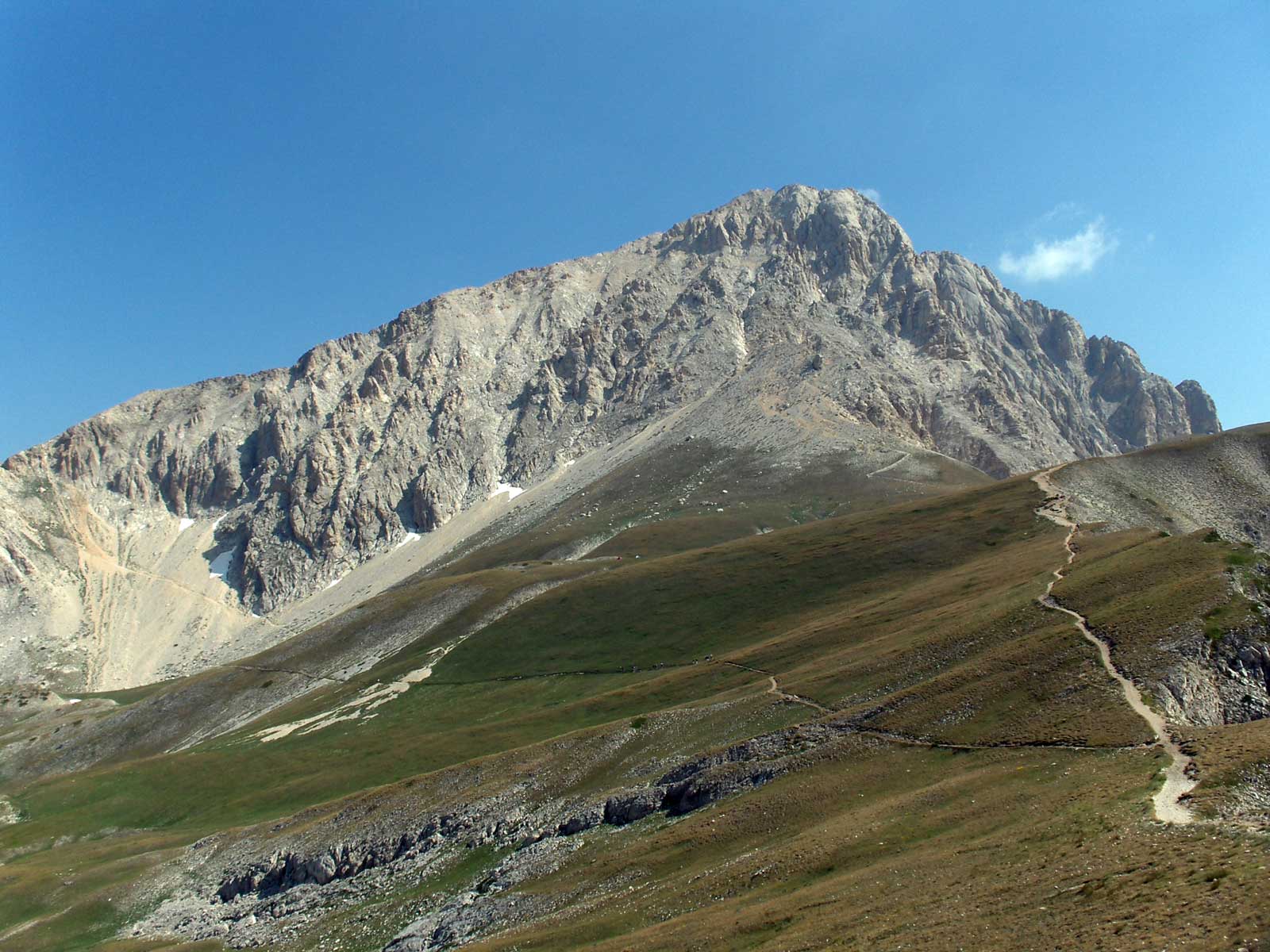
The Campo Imperatore plain was shaped by what was once the most important glacier in the Apennines. Today, the geological conformations of that glacier remain, paving the way for karst phenomena such as some splendid lakes (Lake Pietranzoni and Lake Racollo).
The small Tibet of Italy also attracts many astronomy enthusiasts thanks to the presence of the Astronomical Observatory at an altitude of 2200 metres and, on clear nights, you can easily admire thousands of stars with the naked eye, taking advantage of the total absence of artificial lights.
Not far from the astronomical observatory is the historic Hotel Campo Imperatore, a bright red structure that is clearly visible even in winter when the area is completely covered in snow. The hotel is famous for having been the place of imprisonment of Benito Mussolini before his release.
This unique settlement located at the highest part of the plateau also includes the Church of the Madonna della Neve and the Alpine Botanical Garden of Campo Imperatore where more than 300 plant species are preserved.
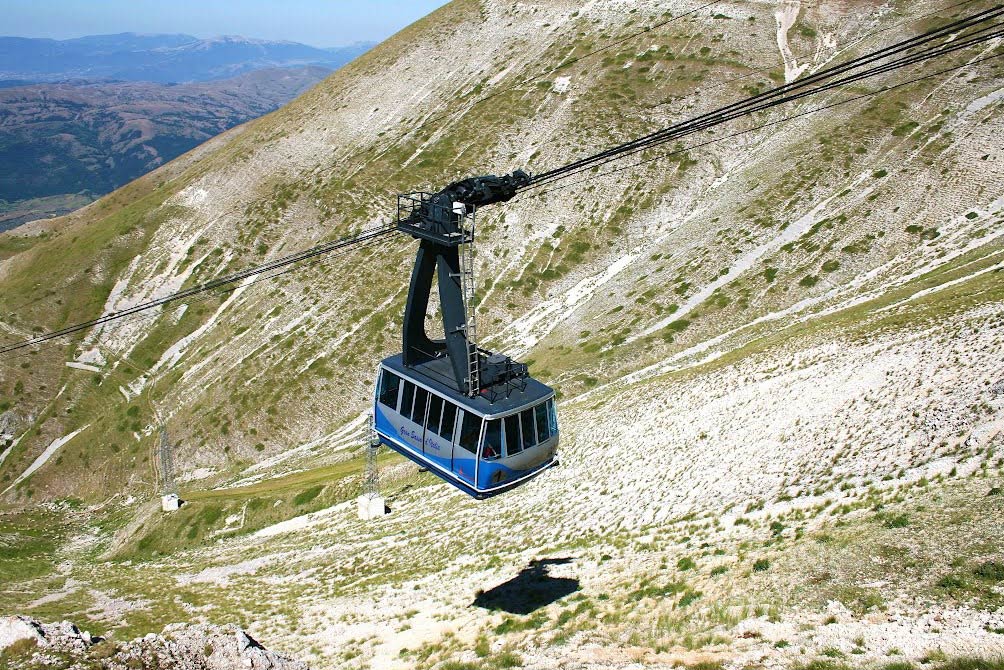
Gran Sasso cable car
After driving around for a while, we decide to park and take the Gran Sasso cable car, which runs from Fonte Cerreto di Assergi to the highest part of the plateau. With over 3 km in length and 1000 metres in height difference, it is one of the longest cable cars in Europe.
Once you have descended from the cable car, after enjoying a splendid view, it is time for lunch. It would be a mistake not to enjoy the arrosticini in one of the restaurants of Campo Imperatore, so we go to the well-known Ristoro Mucciante, where it is possible to buy the meat and the delicacies you want with the possibility to cook them autonomously (but with the help of the staff), using the canalette (or fornacelle), typical grills where you can cook the arrosticini.
Ristoro Mucciante
The Ristoro Mucciante has a special history: the structure that houses it was built for the thriller film Autostop Rosso Sangue, and a few years after filming was taken over to make a restaurant, now a must for the thousands of tourists who flock to Campo Imperatore.

Castel del Monte
With our bellies full and after taking dozens of photos, we decide to head for Castel del Monte, one of the most beautiful villages in Italy and the ‘gateway’ to Campo Imperatore.
One of the best things to do in Castel del Monte is simply to take a walk through its historic centre, through the ancient limestone arches that form tunnels and lead to the most beautiful views of the town. After taking a stroll, we decide to visit (free of charge) the Civic Ethnographic Museum, consisting of five sections scattered around the centre: The Ancient House, The Art of Wool, The Dancing Oven, The Pastoral and The Work of the Fields. It is a real journey back in time, to rediscover how people lived in this village and what their basic tools were.
Church of the Madonna del Suffragio
Among the monuments, the Baroque jewel, the Church of the Madonna del Suffragio, at the foot of the village, is worth a visit. The church’s façade appears modest but inside it contains unimaginable riches, including several paintings and a remarkable organ. The rectangular nave is dominated by the large wooden altar, carved and covered in gold; a masterpiece of Baroque art that most believe to be the most impressive in the province of L’Aquila.
The church is intimately linked to the seasonal rhythms of transhumance (the traditional six-monthly migration of sheep and cows from the plateau to the plains and back). In 2019, it was recently recognised by UNESCO as an intangible cultural heritage. Two processions are held, the first on 2 July marking the return of the local shepherds from Apulia and the second on 8 September their departure, when they were greeted and blessed. To coincide with the departure, in early September, the ‘forty hours’ were held: a period of fasting and prayer before the start of the return journey to the Tavoliere delle Puglie.
Full of culture and a little tired, we go to dinner, staying as light as possible, tasting typical regional products such as Pecorino Abruzzese, Fucino potatoes, ventricina and a good glass of Montepulciano d’Abruzzo.
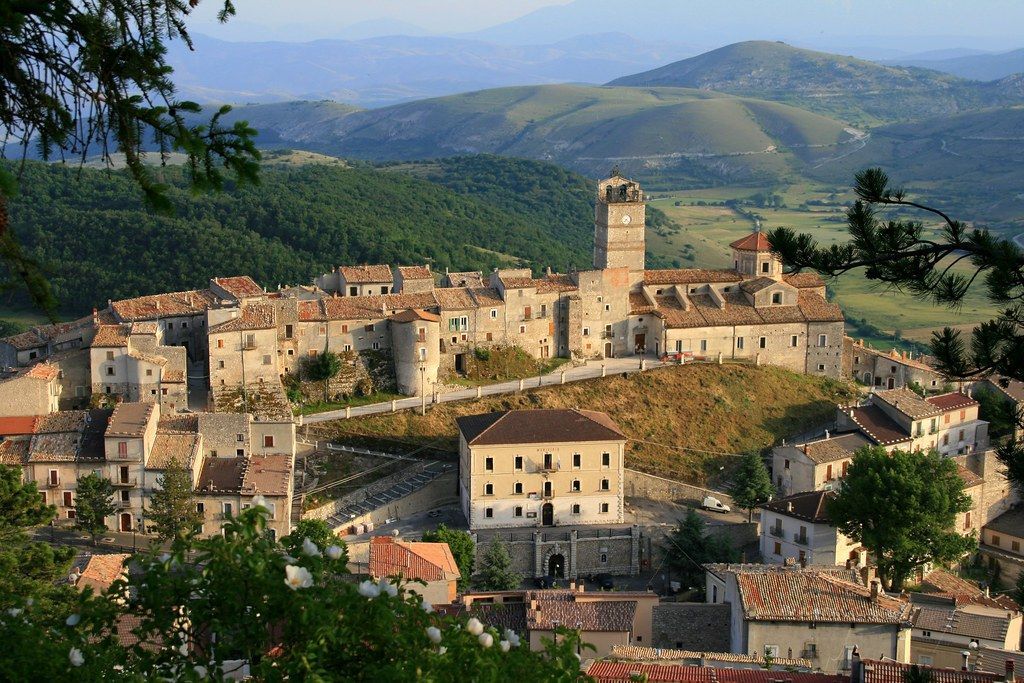
Day 2 – Rocca Calascio and Serramonacesca
After breakfast we head for one of the symbols of Abruzzo, in Italy and worldwide: the medieval castle of Rocca Calascio. Leaving the car in the village (Calascio) it takes just twenty minutes of pleasant walking (weather permitting) to reach the top. The history and atmosphere here are unparalleled, and it is no coincidence that the stronghold was named one of the 15 most beautiful castles in the world by National Geographic.
Rocca Calascio
The fortress rises about 1400 metres above sea level on a spur of rock and dominates the surrounding area and the endless, sumptuous peaks of the Gran Sasso National Park. Rocca Calascio exudes an aura reminiscent of the Middle Ages, a tranquil and peaceful atmosphere, halfway between reality and fantasy.
The construction of the fortress dates back to the year 1000, but the first historical document about it dates back to 1380. The function of the original structure was to serve as a watchtower and to communicate with other towers and castles near the Adriatic Sea. The castle underwent a major renovation, made necessary by a violent earthquake in 1703.
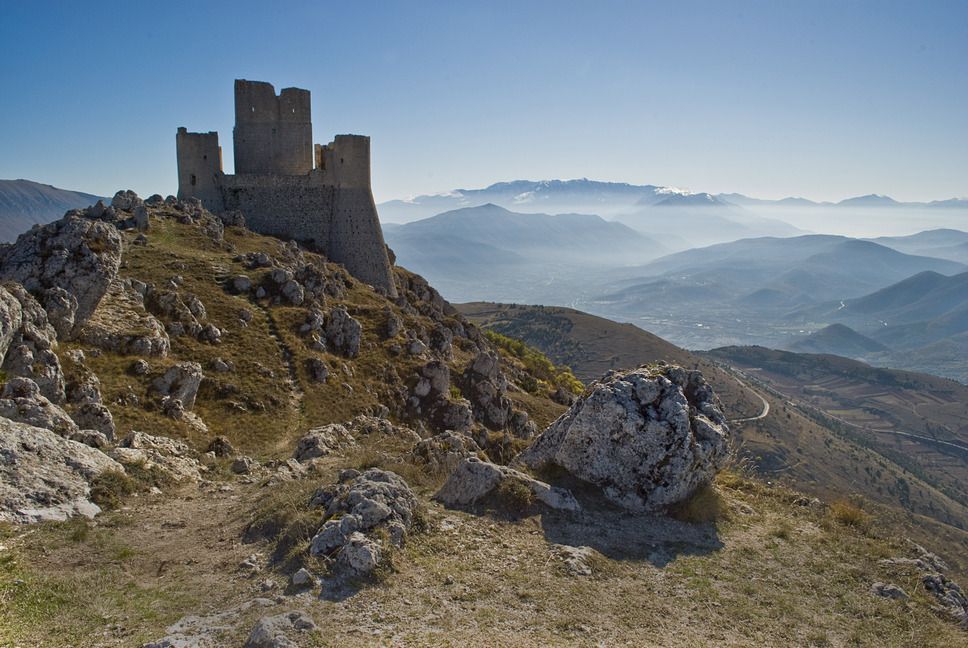
The castle of Rocca Calascio seems to merge with the rocks surrounding it, as if it were a spontaneous creation of the mountain. Built of white stone, it is surrounded by crenellated walls and four corner towers. To enter the castle, it is necessary to cross a wooden bridge, once retractable, which is now supported by stone brackets. The entire castle can be visited free of charge.
It is because of this special atmosphere that the fortress has been chosen as a setting for many films. The first film to be shot here was Lady Hawke (1985), when the castle had not yet been restored. The following year, it was the film The Name of the Rose with Sean Connery. The Rocca can also be seen in some scenes of the film The American (2010) starring George Clooney, a film shot entirely in the province of L’Aquila.
Church of Santa Maria della Pietà
After visiting the castle, heading back along the path, is the Church of Santa Maria della Pietà, a small temple built between the 16th and 17th centuries. According to legend, the church was built on the spot where the locals beat up a notorious gang of thugs roaming the area. According to other sources, it was built in 1451, possibly to a design by Il Bramante.
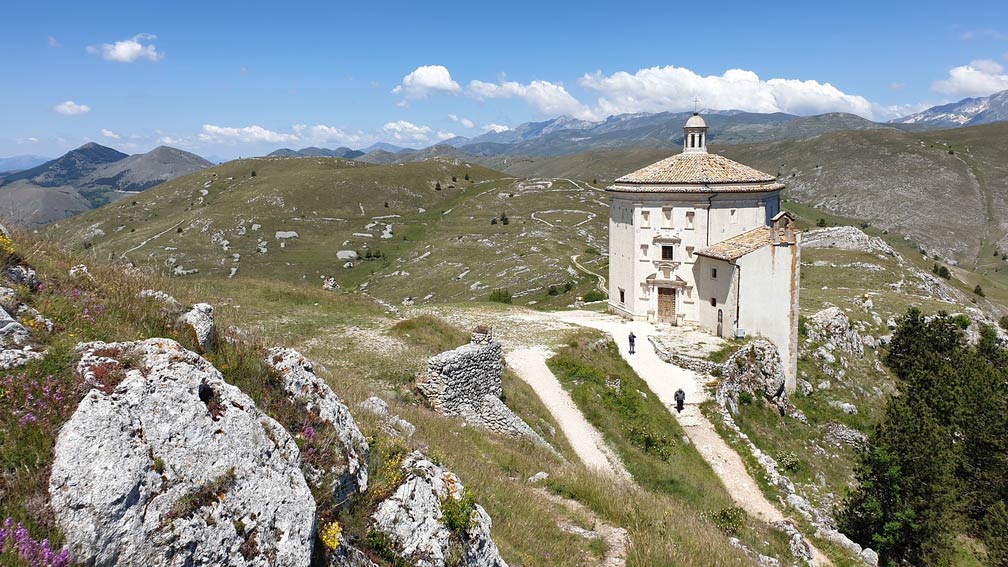
The church has an octagonal exterior structure with a sacristy room against one of the facades and an eight-segment dome. The interior, well structured in a system of Tuscan columns, displays a painting of the Miraculous Virgin and a sculpture of an armed St Michael.
Abbazia di San Liberatore a Majella
Back in the village, we have lunch in a small trattoria. In the afternoon we head to Serramonacesca, specifically to the Abbey of San Liberatore a Maiella, one of the oldest churches in Abruzzo and Italy, dating back to 798 according to some.

The monastery has a basilica layout with three naves and three apses. Along the left aisle there are two doors leading to the cloister, which is still intact. The nave has a mosaic floor from 1275. The façade has a square bell tower next to it, and the surface is divided into three orders, with cornices and pilasters typical of the Romanesque style.
There are many other nearby villages to visit, but for the first time in Abruzzo this is enough. After retrieving the car, we head for the centre of Serramonacesca, where we will spend the night, leaving the car at a Be Charge station.
